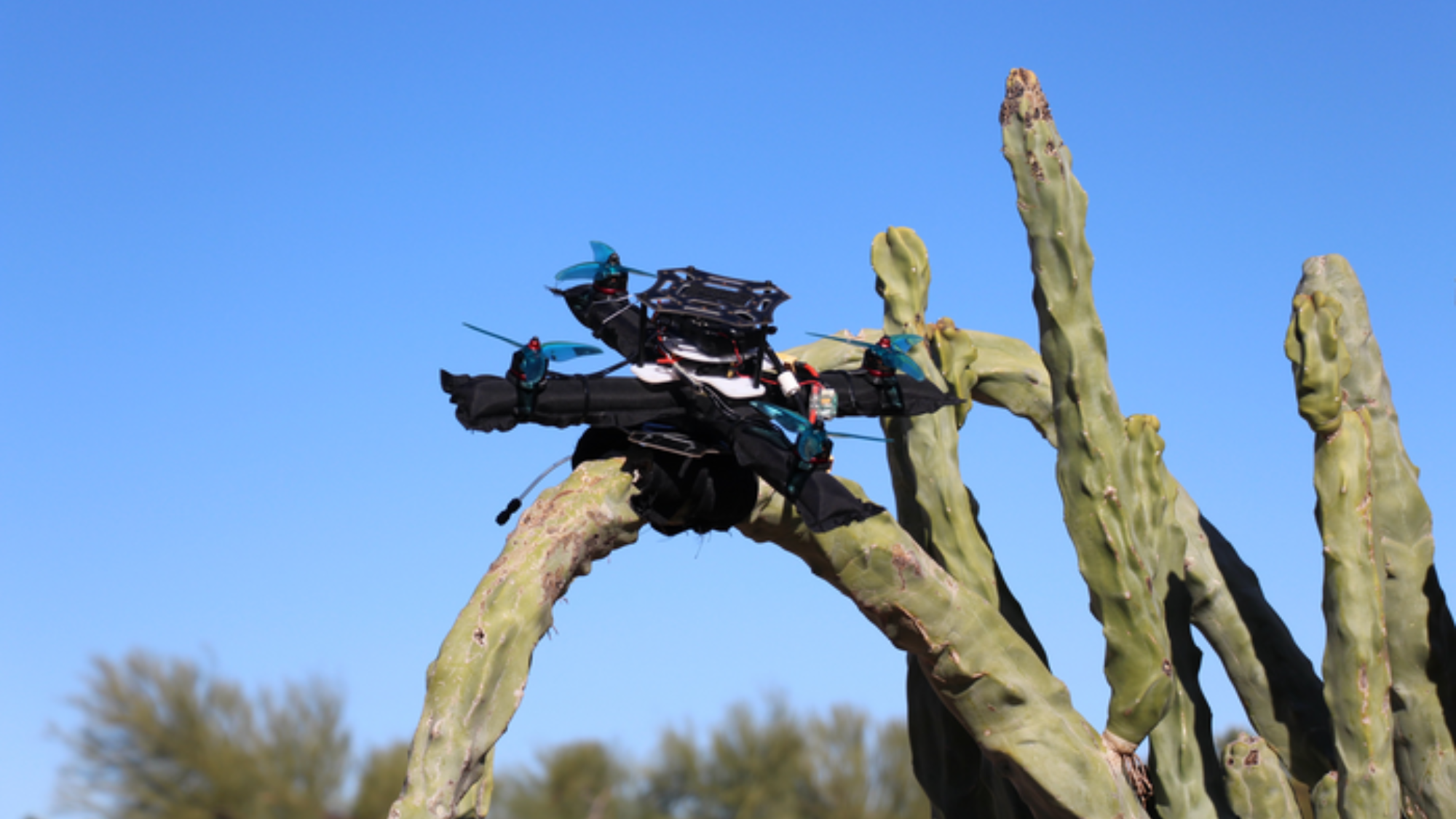

When entering into disaster scenarios, robots still have a major downside—their inability to recover when they inevitably crash into things. Scientists, however, have taken a page out of biology’s playbook, as they often do, to create a drone that can bounce back when met with various obstacles.
Think of a bird landing on a tree branch—in order to do so, they likely have to collide with a few smaller branches or leaves in the process of touching down. But, their joints and soft tissues cushion these bumps along the way, and their feet are built precisely to lock themselves in place without straining a muscle. When a drone opts for a similar route, taking on a bunch of collisions on the way to their destination, it’s a little bit more dramatic. “They don’t recover; they crash,” Wenlong Zhang, an associate professor and robotics expert at Arizona State University said in a release.
“We see drones used to assess damage from high in the sky, but they can’t really navigate through collapsed buildings,” Zhang added. “Their rigid frames compromise resilience to collision, so bumping into posts, beams, pipes or cables in a wrecked structure is often catastrophic.”

Zhang is an author of a recent paper published in Soft Robotics wherein a team of scientists designed and tested a quadrotor drone with an inflatable frame, apparently the first of its kind. The inflatable frame acts almost like a blow-up suit, protecting the drone from any harsh consequences of banging into a wall or another obstacle. It also provides the kind of soft tissue absorption necessary for perching—the team’s next task.
[Related: Watch this bird-like robot make a graceful landing on its perch.]
After studying how birds land and grip onto branches with their taloned feet, the team developed a fabric-based bistable grasper for the inflatable drone. The grasper had two unpowered “resting states,” meaning it can remain open or closed without using energy, and reacts to impact of landing by closing its little feet and gripping hard onto a nearby object.

“It can perch on pretty much anything. Also, the bistable material means it doesn’t need an actuator to provide power to hold its perch. It just closes and stays like that without consuming any energy,” Zhang said in the release. “Then when needed, the gripper can be pneumatically retracted and the drone can just take off.”
A more resilient type of drone is crucial for search and rescue scenarios when the path forward may be filled with debris, but the authors could also see this kind of creation being useful in monitoring forest fires or even exploration on other planets.
